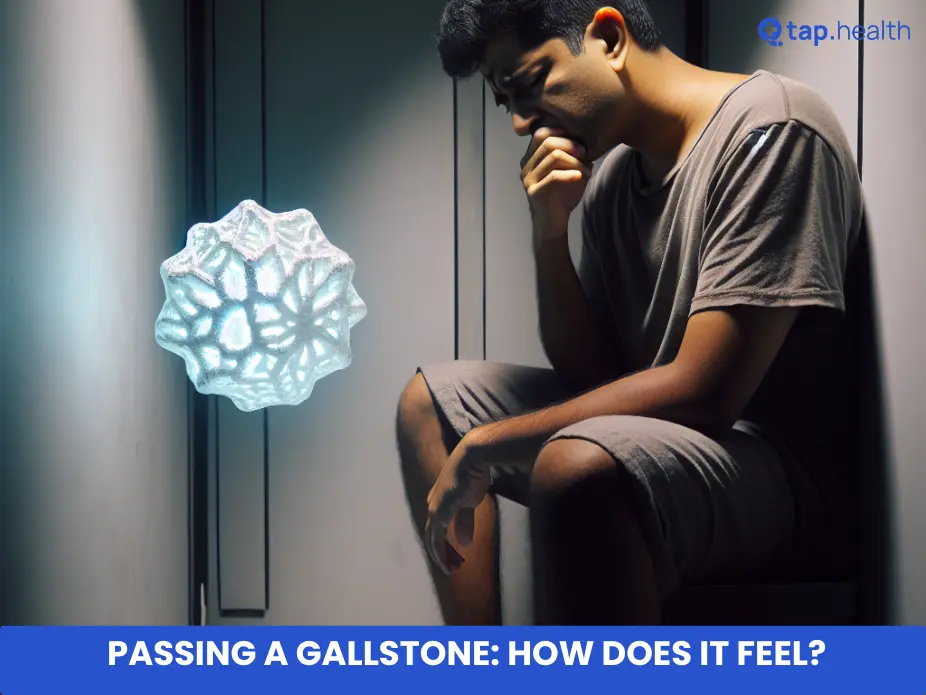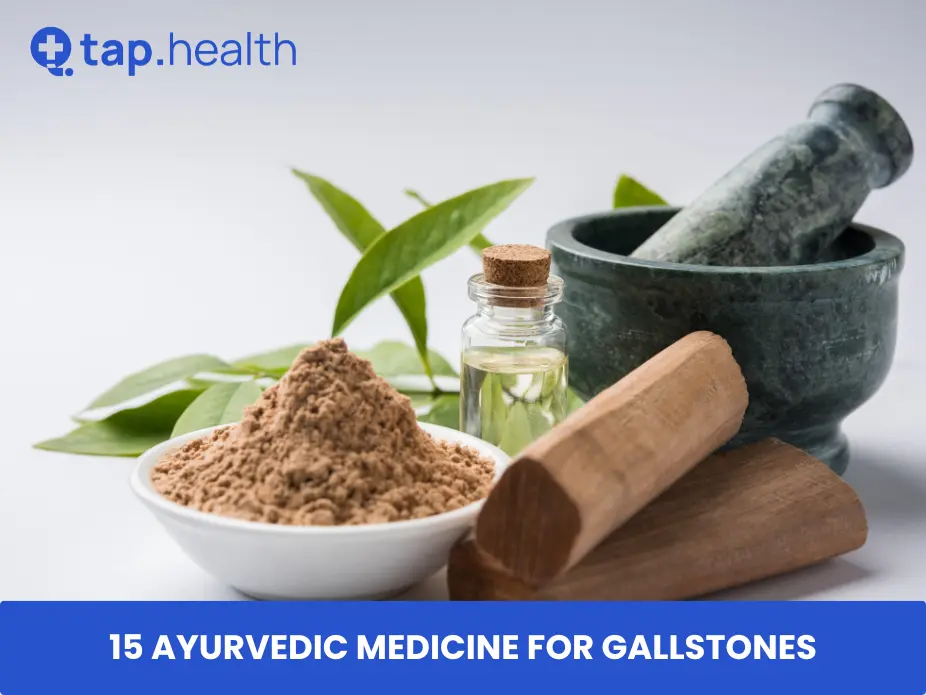Gallstones are hardened deposits of digestive fluid that can form in your gallbladder, a small organ located beneath your liver. While many gallstones cause no symptoms and are discovered incidentally, some can cause significant pain and discomfort, especially when they pass through the bile ducts. Understanding how it feels to pass a gallstone can help you recognize the symptoms and seek appropriate medical care.
What Are Gallstones?
Gallstones can vary in size and type. They are generally categorized into two main types:
- Cholesterol Gallstones: These are the most common type, formed primarily from hardened cholesterol.
- Pigment Gallstones: These are made up of bilirubin, a substance produced from the breakdown of red blood cells.
Gallstones can be as small as a grain of sand or as large as a golf ball. When they pass through the bile ducts, they can cause pain and other symptoms.
Symptoms of Passing a Gallstone
Passing a gallstone can trigger a range of symptoms. The intensity and type of symptoms can vary depending on the size of the stone, its location, and whether it causes a blockage.
- Intense Pain (Biliary Colic): The most common symptom of passing a gallstone is sudden and severe pain, known as biliary colic. This pain typically occurs in the upper right quadrant of the abdomen, under the rib cage, and can radiate to the back or right shoulder. The pain may last for several minutes to a few hours and can be extremely intense. It often comes on suddenly and can be described as sharp, cramping, or throbbing.
- Nausea and Vomiting: Along with the pain, you may experience nausea and vomiting. These symptoms are common when the digestive system is disrupted by the presence of gallstones.
- Jaundice: If a gallstone becomes lodged in the bile duct, it can cause a blockage, leading to jaundice. Jaundice is characterized by yellowing of the skin and eyes due to the buildup of bilirubin in the blood. It may be accompanied by dark urine and pale stools.
- Fever and Chills: A gallstone that causes an infection or inflammation in the bile ducts (cholangitis) or gallbladder (cholecystitis) can lead to fever and chills. This is a sign of a potentially serious infection and requires immediate medical attention.
- Changes in Stool and Urine Color: Passing a gallstone can affect the color of your stool and urine. You may notice that your stool becomes lighter in color, while your urine becomes darker.
- Digestive Issues: Gallstones can also cause other digestive problems, such as bloating, indigestion, and gas. These symptoms may be more noticeable after eating a fatty meal.
Signs Indicating a Gallstone Is Passing
When you suddenly feel a sharp pain in the upper part of your belly or back, and it makes you feel sick to your stomach with throwing up, this might mean a gallstone is moving through. Watch for pain that gets really bad and then slowly gets better, along with discomfort spreading to your right shoulder. You might also see signs like turning yellow (jaundice), pee that’s darker than usual, and poop that looks light-colored or clay-like. If these problems don’t go away or get worse, it’s important to get help from a doctor because it could be something serious going on with your gallbladder or bile duct.
What Does Passing a Gallstone Feel Like?
Passing a gallstone can feel different for everyone, but the common experience includes:
- Sharp, Sudden Pain: The pain often starts suddenly and can be severe. It may feel like a sharp, cramping sensation in the upper right abdomen.
- Radiating Pain: The pain can radiate to the back, between the shoulder blades, or to the right shoulder.
- Waves of Pain: The pain may come in waves, with periods of intense pain followed by some relief.
- Nausea and Vomiting: The pain is often accompanied by nausea and vomiting, making you feel very unwell.
- Inability to Find Relief: Many people describe an inability to find a comfortable position to relieve the pain. Lying down, sitting up, or moving around does not ease the discomfort.
- Short Duration: While the pain can be intense, it typically lasts for 30 minutes to a few hours and then subsides, although it can recur.
The Journey of a Gallstone: From Formation to Passage
Gallstones usually start in the gallbladder and can be as tiny as a grain of sand or as big as a golf ball. They form when there’s too much cholesterol or bilirubin in the bile, turning into hard bits. These bits can then move through your bile ducts and might block them or cause swelling. Eating lots of foods high in cholesterol, being overweight, or losing weight quickly can affect how these stones move around. Understanding how gallstones form and travel helps us understand more about what causes problems related to them.
How Gallstones Move within the Biliary System
Gallstones journey through the biliary system, starting from the gallbladder and making their way into the bile ducts. Along this path, factors like the size of the stone and how bile flows can affect their movement. When these stones move through the bile ducts, they might block them, causing severe abdominal pain as a symptom. Knowing about this complex route that gallstones take helps us understand potential problems that could arise during their journey.
Factors Influencing the Passage of Gallstones
Several factors are crucial when gallstones move through the bile duct. The size and composition of the stone are critical. Smaller stones tend to pass with less trouble and pain compared to larger ones. The shape and structure of a gallstone can also influence its journey. Additionally, the speed at which bile moves and the presence of any blockages in the biliary system play significant roles in whether a stone will pass easily. Your diet and overall health also impact this process.
Experiencing a Gallstone Passage
Passing a gallstone isn’t easy. When a gallstone moves through the bile duct, it can cause severe abdominal pain, sometimes likened to the pain experienced during a heart attack. Along with this intense discomfort, nausea and vomiting may occur as the stone moves toward the small intestine. This experience can be distressing, especially if the gallstone is large. Understanding these feelings is important so you can recognize when to seek immediate medical care.
What Does It Feel Like to Pass a Gallstone?
When you pass a gallstone, it can cause intense abdominal pain that may radiate to your back or shoulder. It feels like waves of pain that cramp up your stomach. You may also experience nausea and vomiting. This kind of discomfort can be extremely painful and last anywhere from a few minutes to several hours.
Differences in Experience Based on Gallstone Size and Type
The symptoms you feel heavily depend on the size and type of gallstone. Smaller stones, resembling grains of sand, typically cause mild discomfort or go unnoticed. However, larger stones can lead to severe abdominal pain and bile duct obstruction. Understanding the different sizes and types of gallstones gives you a better idea of what to expect if they start moving through your system.
Complications and Risks of Passing Gallstones
When gallstones move through your body, they can sometimes cause significant problems. For example, these stones might lead to acute cholecystitis, where the gallbladder becomes severely inflamed and requires immediate medical attention. If a stone blocks the common bile duct, it could result in another type of inflammation called acute cholangitis. Without timely treatment, complications such as pancreatitis due to gallstones or even gallbladder cancer could arise. Therefore, it’s crucial to monitor any severe abdominal pain or other concerning symptoms related to gallstones. Seeking medical attention promptly can help prevent serious issues.
Potential Complications During Gallstone Passage
When gallstones move, they can block the bile duct, causing severe pain and potentially leading to an infection. In some cases, gallstones can cause significant swelling of the gallbladder or the connected tubes. This swelling, known as acute cholecystitis or acute cholangitis when affecting the tubes, requires urgent medical intervention. Without prompt care, complications such as gallbladder perforation or sepsis—an intense body-wide response to infection—may occur. It’s essential to be vigilant for any symptoms and seek help immediately if you suspect gallstones are causing problems.
When to Seek Medical Advice
Passing a gallstone can be a medical emergency, especially if it leads to complications such as an infection or blockage. It is important to seek medical attention if you experience any of the following:
- Severe Abdominal Pain: Intense, sudden pain that does not subside requires immediate medical attention.
- Fever and Chills: These symptoms can indicate an infection that needs prompt treatment.
- Jaundice: Yellowing of the skin or eyes should be evaluated by a healthcare professional.
- Persistent Nausea and Vomiting: Inability to keep food or liquids down can lead to dehydration and requires medical care.
- Dark Urine and Pale Stools: Changes in urine and stool color can indicate a blockage in the bile ducts.
Diagnosis and Treatment
If you suspect you are passing a gallstone, your healthcare provider may perform tests to diagnose the condition. These tests may include:
- Ultrasound: This imaging test can detect gallstones in the gallbladder and bile ducts.
- CT Scan: A CT scan provides detailed images of the abdominal organs and identifies blockages.
- Blood Tests: These tests check for signs of infection, inflammation, and liver function.
- HIDA Scan: This test evaluates the function of the gallbladder and bile ducts.
Treatment for passing a gallstone may involve:
- Pain Management: Medications to relieve pain and discomfort.
- Antibiotics: If an infection is present, antibiotics may be prescribed.
- ERCP: Endoscopic retrograde cholangiopancreatography (ERCP) can be used to remove stones from the bile ducts.
- Surgery: In some cases, surgery to remove the gallbladder (cholecystectomy) may be necessary.
FAQs on Passing a Gallstone: How Does It Feel?
1. How Long Does It Typically Take to Pass a Gallstone?
How long it takes for a gallstone to move through your system can change based on how big it is and where it’s located. When we’re talking about small gallstones, they can make their way into the small intestine and then leave your body with the waste you flush down the toilet. Usually, this could take from a few days up to a couple of weeks. On the other hand, if we’re dealing with bigger gallstones, there might be a need for doctors to step in and help get them out or break them down so they can pass more easily.
2. Can Diet Influence Gallstone Passage?
What you eat can affect whether or not you get gallstones. If your diet is full of saturated fats and cholesterol, there’s a higher chance you might end up with cholesterol gallstones. On the other hand, losing weight too quickly, which sometimes happens with strict diets, can also lead to getting gallstones. By eating foods that are low in saturated fats and cholesterol, you could lower your risk of having gallstones and make it easier for them to pass if they do form.
3. Are There Any Long-term Effects After Passing a Gallstone?
Once you’ve passed a gallstone, usually there’s nothing much to worry about afterward. But for those who have had their gallbladder taken out through surgery, they might notice some differences in how their body handles food and the way they go to the bathroom. On rare occasions, serious issues like infections caused by gallstones or even cancer of the gallbladder can pop up. It’s crucial to talk over any worries with a doctor so they can keep an eye on things and make sure you get the right care moving forward.


